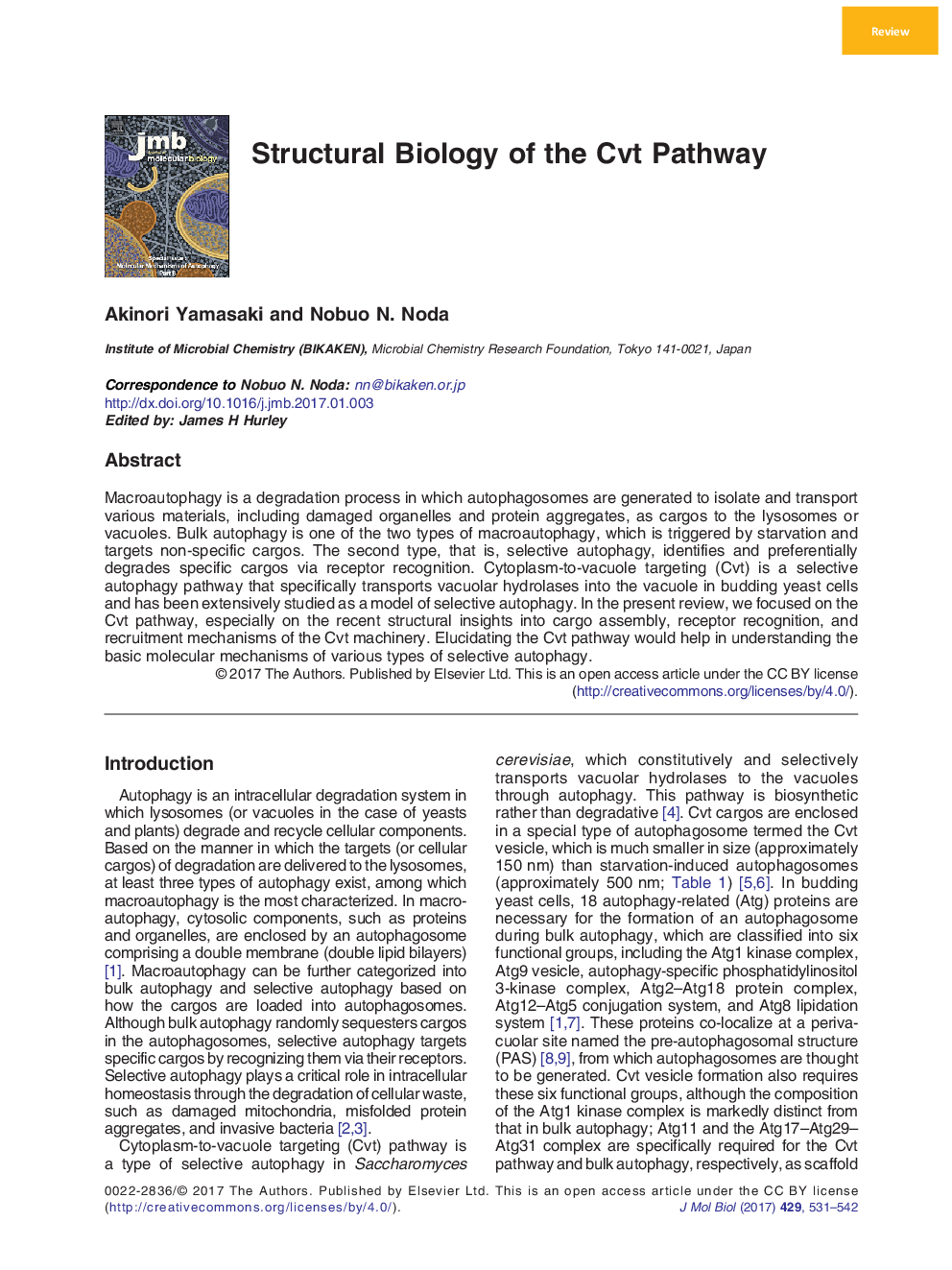| کد مقاله | کد نشریه | سال انتشار | مقاله انگلیسی | نسخه تمام متن |
|---|---|---|---|---|
| 5532852 | 1402082 | 2017 | 12 صفحه PDF | دانلود رایگان |

- Ape1 complex is formed by the trimer formation of the propeptide that tethers Ape1 dodecamers.
- Atg19 regulates the size of the Ape1 complex by blanketing and recognizes multiple cargos.
- Cvt vesicle formation proceeds via the interaction of Atg19 with Atg11 and multiple Atg8s.
Macroautophagy is a degradation process in which autophagosomes are generated to isolate and transport various materials, including damaged organelles and protein aggregates, as cargos to the lysosomes or vacuoles. Bulk autophagy is one of the two types of macroautophagy, which is triggered by starvation and targets non-specific cargos. The second type, that is, selective autophagy, identifies and preferentially degrades specific cargos via receptor recognition. Cytoplasm-to-vacuole targeting (Cvt) is a selective autophagy pathway that specifically transports vacuolar hydrolases into the vacuole in budding yeast cells and has been extensively studied as a model of selective autophagy. In the present review, we focused on the Cvt pathway, especially on the recent structural insights into cargo assembly, receptor recognition, and recruitment mechanisms of the Cvt machinery. Elucidating the Cvt pathway would help in understanding the basic molecular mechanisms of various types of selective autophagy.
Graphical Abstract392
Journal: Journal of Molecular Biology - Volume 429, Issue 4, 17 February 2017, Pages 531-542